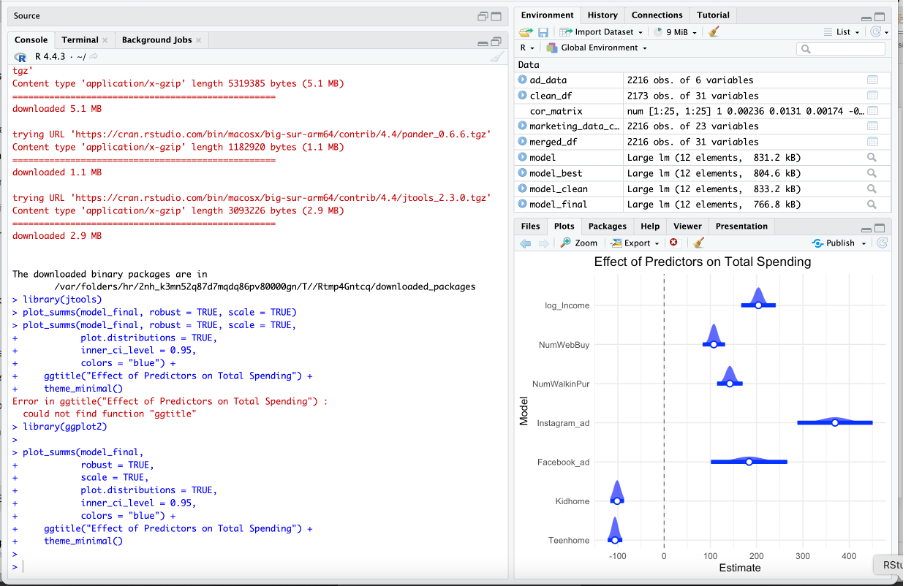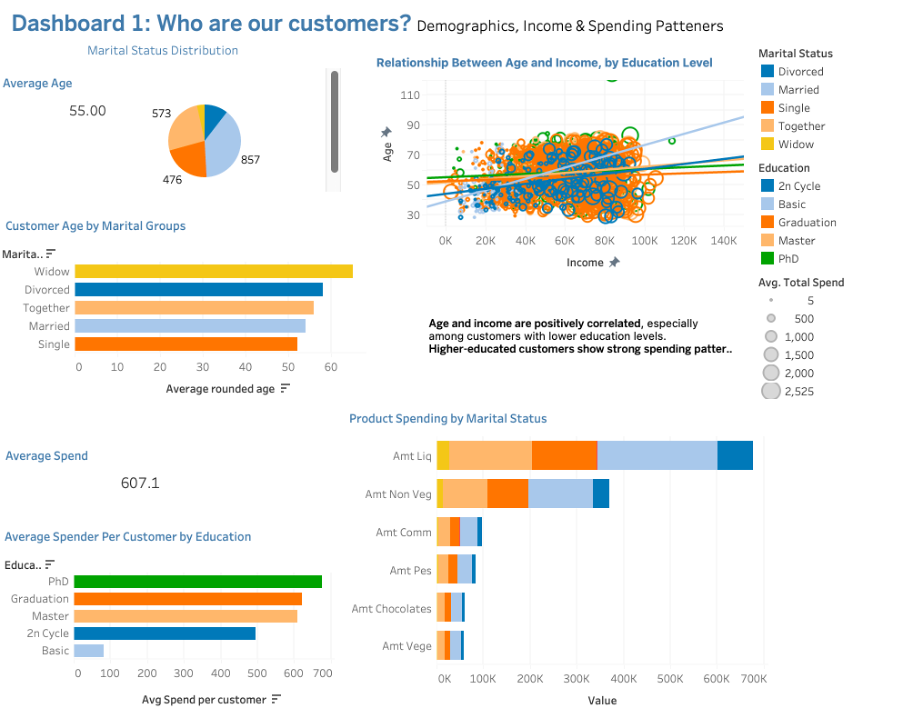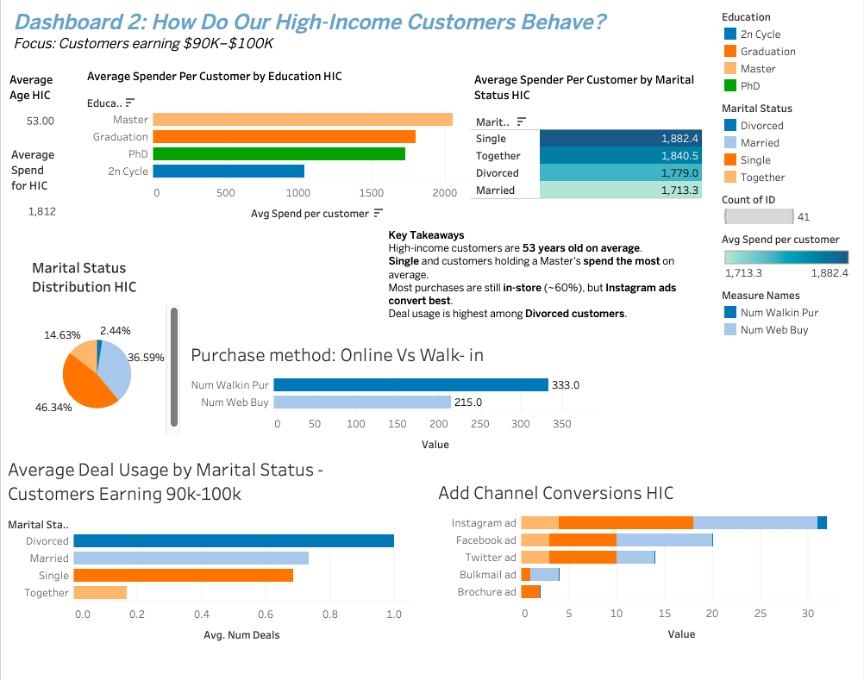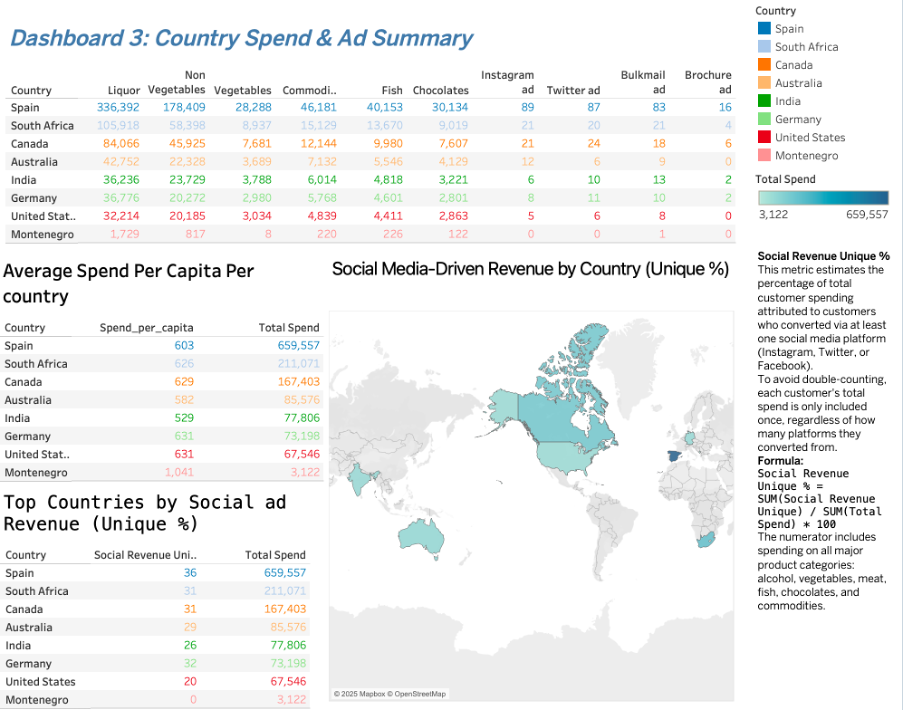Demographics & Spending Patterns
• Average customer age: ~55 years (44 if base year 2014)
• Married customers: largest segment (~857, 38.7%)
• Positive correlation between age, income, and education
• Customers with Master’s or PhD degrees demonstrate the highest average spending
• Liquor and non-vegetables are the most purchased product categories, particularly among higher-educated and married customers
Key Insight: Higher spending is strongly correlated with education level and marital status. Premium products such as liquor and non-vegetables are particularly popular among high-income, highly educated, and married customers. To optimise marketing efforts, campaigns should focus on this high-spending segment, utilising tailored messaging that appeals to these customers' preferences for premium products.



